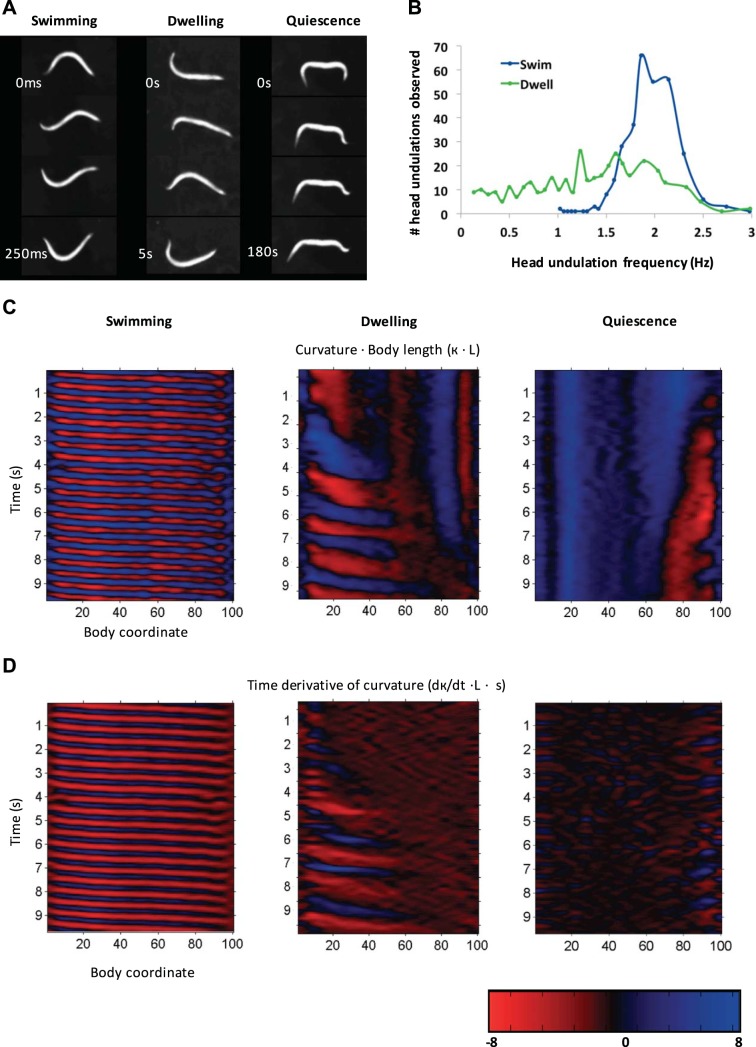Fig. 4.
Locomotion and head undulation frequency differ by behavioral state. A: representative images of worms in the indicated behavioral state. Anterior is to left. Swimming worms’ curvature varies from anterior to posterior as their whole body bends, but dwelling worms lack bending in the posterior. Quiescent worms have almost no movement, but their body changes posture through relaxation and occasional twitching. B: head undulation frequency of worms in either the swimming or dwelling state suggests that dwelling worms have a broader range of head undulation speeds including some speeds similar to crawling worms even though these worms are in liquid. The histogram represents data from n = 16/11 (swimming/dwelling) worms and n = 376/312 undulations. C and D: curvature analysis of the same worms from A over 9 s across the whole body. Red and blue color map indicates curvature (C) or time derivative of curvature (D) in the dorsal and ventral directions, respectively.

